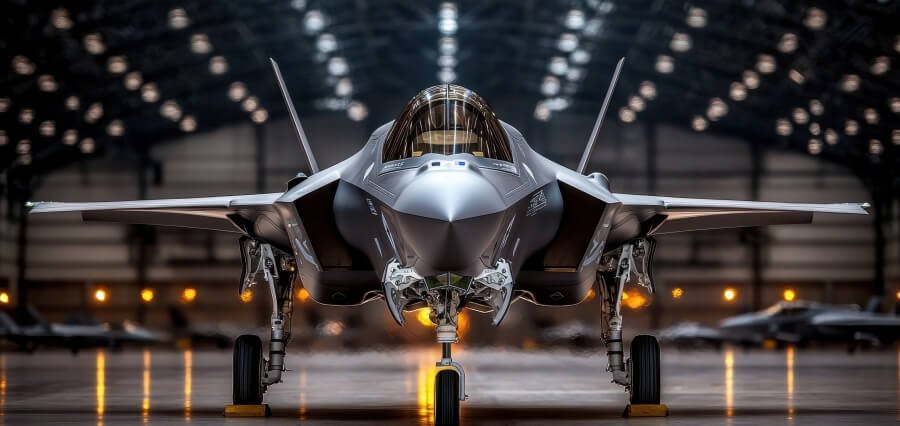In the changing and competitive field of defense aviation, the need for efficient monitoring solutions for military aircraft is greater than ever. These solutions are like the ‘heart’ of modern military aviation, so along with the ‘life’ of the aircraft and the ‘safety’ of the pilots, they also offer the ‘security’ of the success of complex missions. Through the use of real-time data acquisition to advanced predictive analytics and so on, all the instruments and technologies applied to military aircraft monitoring are almost future-proof in addressing the specific difficulties caused by military operations.
There is no doubt about the importance of these monitoring solutions in the military sector; they have become a default feature of defense strategies all over the world. Military air forces, unlike commercial aviation, are in no position to complain about harsh critical conditions as they are, and on top of that, the dangers they encounter range from adverse weather to fierce security threats. This milieu makes it a must to check 100% through the most up-to-date technology that can uncover issues before they get bigger and even lead to dangerous failures. The ability to trace every system is what, for example, the RAF can use to deliver the highest level of readiness of military aviation units.
The deployment of sensor technology in monitoring solutions is one of the major changes in the portrayal of military aircraft of today. The various types of sensors implanted in the aircraft are continuously recording minute details of the engine condition, fuel level, structural safety, and other electronic systems. The information is then conveyed in real time to the ground control for feedback, which makes it possible for decisions to be executed at once. For example, if a sensor feels an unusual pattern of vibration in the jet engine, the maintenance team can receive the alert prior to the arrival of the airplane at the runway; thus, a considerable amount of downtime is taken out as well as preventing any terrible breakdowns.
Besides sensor technology, the development of AI and machine learning has massively changed the way these monitoring solutions are set to process large volumes of data. AI models will look for patterns and predict possible issues with accuracy so that maintenance workers will be able to do their work before problems arise. It is not only by that move that the aircraft’s security is strengthened, but also, greatly, maintenance costs are reduced since the maintenance predicted and scheduled is based on the aircraft’s need, and no more unscheduled landed flights are bettered. The self-report of the system leads to better preparedness and greater reliability in military operations.
Moreover, the other benefit that underlines tracking solutions for military aircraft is that they contribute to pilot safety. For example, modern helicopters and jets are presently fitted with comprehensive systems that allow monitoring of not only the cockpit but also the whole plane, including the pilot’s health and aircraft performance simultaneously. An abnormality, such as weird noises, too much pressure, or low oxygen, can make the system send the alarm to the pilot, prompting him to give the needed assistance, or when it is qualified to happen, an emergency landing can be suggested. Becoming aware of pilot performance and safety in a critical and fast-paced fight is the primary concern; moreover, these monitoring systems are the key in hand in fulfilling this aim.
In a word, monitoring systems can also contribute to military effectiveness. Today, military aircraft must execute their operations with high accuracy and very fast decisions. Monitoring systems enable the streaming of data regarding pilot commands, environmental conditions, aircraft, etc., thus giving the idea and the possibility to change tactics instantly. Upon a stage of either reconnaissance or fight, data from monitoring tools could be the means through which the best-performing flying heights, along with the management of fuel and the use of the cannon, are guided, leading to higher mission success percentages.
Furthermore, the idea of monitoring an individual aircraft has evolved to full-fledged fleet-wide monitoring that is claimed to be one of the most significant changes in the management of military air forces. Strategic command centers gather data from the entire fleet and use it to detect trends, anticipate logistical needs, and determine maintenance schedules on a big scale. The total aircraft’s readiness, and therefore, the war capabilities, depends on a well-coordinated battle plan that takes into account the time of engagement, including the hours that accommodations like these come in handy.
Despite the revolutionary nature of the technological aspects, the processing of monitoring solutions for military aircraft also encompasses the implementation of cybersecurity measures of a very high standard. Since military operations are extremely confidential, it is very necessary that any data being transferred between the aircraft and the ground station should be trustworthy. As a measure against the most horrific human activities, tightly sealed cyber security and early warning of system breaches are intimately linked to monitoring programs to protect mission-critical data, the targeted hijacking of which, as well as the control of the systems, is among the main objectives for the attackers.
Thinking about the future, the periods of fantastic breakthroughs in monitoring solutions for military aircraft are going to be a nice thankful gift of the continual improvement. The very ambitious work for the development of new types of sensors, quantum computing, and more advanced AI models is aimed at stepping beyond the limits of precision, speed, and stability. The dream of the future takes shape in the form of networks that allow for global monitoring from space and drones that can inspect, without the need for the human hand, the external part of the aircraft, thus letting maintenance and monitoring reach new dimensions of automation and efficiency.
In fact, military aircraft monitoring solutions are the main pillars through which safety, maintenance, and combat preparedness are guaranteed. Their real-time data collection, processing, and implementation function essentially facilitate the way military operations air their strategies and maintain their fleets. With the progress of technology, these systems will not only become more effective but will also enable the aircraft to be ever more cutting-edge in aeronautical performance as well as security. Therefore, for today and the future of military aviation, investing in sophisticated monitoring technologies is definitely a step not only wise but most certainly necessary.





